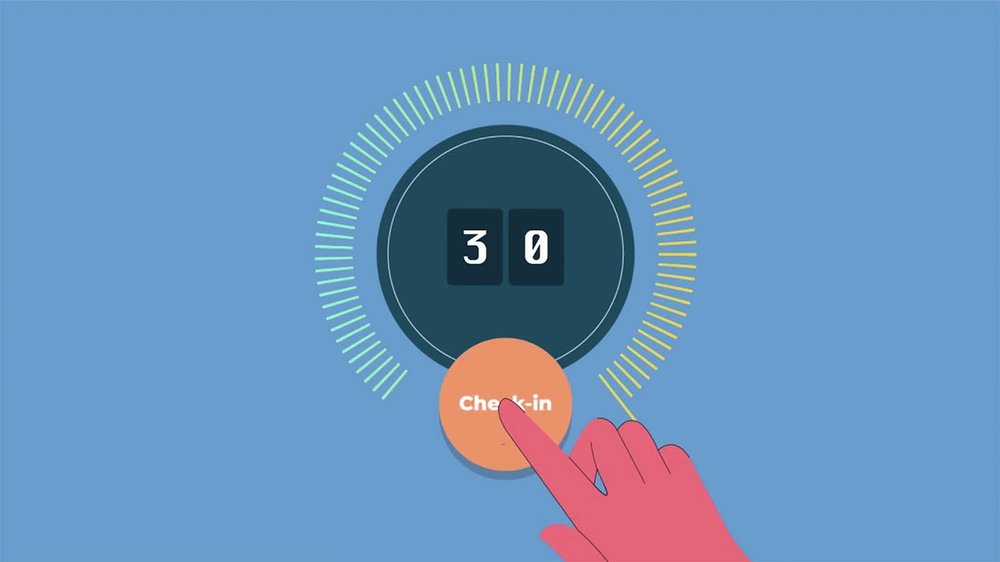Since the start of the pandemic, the incidence of students struggling with anxiety, emotional detachment and mental health issues have increased exponentially. Remote learning has caused isolation and a very serious interruption in the routines that youth depend on. Technology it seems, with all its promise, is the principal culprit in an unprecedented rise in emotional disorder among our young people. However, at the same time, technology can be the savior for our youth, allowing and even encouraging our youngsters to open up and express their hardships, sharing this information with their teachers, school administration and parents. In a coin-toss for your students’ emotional state, new tech is coming up heads, and our children are finding a clear path to emotional wellbeing.
Traditionally, school communities have relied on infrequent large-scale surveys and teacher observations to effectively manage wellbeing. While these remain important support structures, it is now recognized that wellbeing can change rapidly from week to week and that very few students will communicate this, even if they are under severe psychological distress. Equally concerning is the fact that many of the threats we face to our wellbeing today take place ‘under the surface’ and are ever-present due to our increasingly advanced mechanisms for bullying, discriminating, spreading idealism and inducing anxiety. For students, these threats can manifest quickly, quietly and in many forms, which is why regular reporting on the part of the student, also known as student voice, has become an integral part of managing the increasingly complex wellbeing issues that our children and young people face.
Our research has shown that there is willingness from children and young people to speak up, so long as they have the right outlet to do so. This willingness has been demonstrated by online activity on our social platforms, which we elaborate on further in our article ‘A Lesson From Social Media About Wellbeing Management’. In a busy school environment, however, students are afforded very few opportunities to speak about their wellbeing in a comfortable, safe and engaging manner.
In our last two years of school, we worked together to help Ian’s struggle with mental illness. After Ian’s recovery we reflected on what we had learned and realized that young people need support and skills to maintain well-being as a positive step toward good mental health.
In a world where wellbeing is a top concern among school personnel, we need to give every student a voice that can be heard and acted upon. Technology allows us that opportunity.
A regular check in by students is fundamental to address growing mental illness concerns. Technology can unlock the voices of young people to gain an understanding of their wellbeing. Most mental illnesses develop during youth and there are moments and dynamics that can foreshadow these; that anxious feeling of meeting new people when entering high school, getting braces on, being excluded from lunchtime groups, missing out on sporting team selection. Whether minor or major, understanding how children feel, cope and respond in the moment is critical to positively shaping their social and emotional development. In turn, this can support them in understanding their own wellbeing and through small changes in dialogue, equip them with healthier ways of thinking.
A regular check in has the power to strike a balance between academic rigor and efficacy, and student engagement. It requires a change in traditional survey models that relied on scales and prescriptive frameworks. And it should give students the freedom to express themselves through emojis, photos and illustrations, as well as, importantly, open ended responses. The wellbeing data must be intuitive and easy to use. Ideally, it also has a flexible API to eliminate data silos and enable event-based delivery of check-ins, which in-turn provides insight into how children respond to real world scenarios as they happen. For example, tying in academic data to check-in with students that have received an exam result below their average to see how they respond.
Addressing challenges
Two fundamental challenges we face in meeting the social and emotional needs of our young people are that:
- Their wellbeing can fluctuate rapidly from week to week
- They often choose not to communicate this, so it is difficult to identify when a student might be struggling.
A regular check-in can address these due to its ability to engage students’ voices in a quick and simple way and provide real-time understanding of wellbeing for teachers and senior leaders. It starts the dialogue between students, staff and families for what can become life-changing conversations. These conversations are not just addressing immediate wellbeing issues, but also sharing stories of gratitude and aspirations that help foster happy, safe and connected school communities.
Key considerations
• How long is the check-in for the student? We have found 30-45 seconds is the sweet spot for student engagement (3-4 questions).
• What medium are you using to check-in? Digital is best for the purposes of checking in for a couple of reasons. First, it makes it more manageable for your school. Second, students feel comfortable to start the dialogue online, remember though, the conversation should be taken offline where appropriate.
• How extensive and user friendly is the reporting? Is it going to create a whole lot of work for your teachers each time you check-in? We recommend a layered approach wherein classroom teachers can get fast, easy to action feedback within 2 minutes, and senior leaders can dig deeper to inform future wellbeing planning.
• To check in on their own accord allows a student to check-in unprompted by the teacher. A regular check-in should begin to break down the stigma and fear around having open and honest conversations about mental health. Normalizing it should in turn encourage students to reach out proactively.
• Encourage students to open up in such a way that they are able to communicate whether they are doing well, simply having a bad day, or facing a greater struggle. Solely asking if someone is feeling sad or happy may only tell a small part of the story. A student may be worried due to exams, or they may be worried due to something that may be more concerning such as bullying or body image. Use age-appropriate illustrations and gifs to help students express what is going on, whether it be positive or negative, and allow free-text responses. This way you can quickly understand if further follow-up is required.
Collecting data over time to inform program planning
Checking-in as infrequently as once a month, schools are still able to map out key moments in their schedule and what to look for during these moments. Some of these may be instinctively known, others not so much. Schools can also compare across cohorts to identify which year groups bullying is most prevalent when social media starts to play a bigger role in young people’s lives and correlations in the drop-off or increase in wellbeing due to this.
Asking the right questions to unlock student voice
If you’re an educational leader that has decided to introduce a regular online check-in, question design will be critical to amplifying student voice. Asking the right questions can be tricky. There are many different question types, each with its own benefits. When it comes to amplifying voice, open-ended questions will provide students with the greatest opportunity to express themselves. Here are 25 open-ended questions you might ask your students when you check-in with them.
1. Is there anything your teacher doesn’t know about you that you would like them to know?
2. If you could be any historical figure, who would it be and why?
3. Describe a quality you admire in your best friend.
4. What are you grateful to your parents (or friends) for?
5. Who is your idol and why?
6. What is your biggest challenge right now and how can I help?
7. If you were the Principal, what would you change about the school?
8. If you were the Principal, what would you have done differently during <insert important event>? e.g.what would you have done differently during COVID-19?
9. What lesson have you learned that you would like to share with others?
10. What is one quality that you like about yourself?
11. When was the last time you felt really frustrated and what triggered it?
12. How do you feel about making new friends?
13. When was the last time you felt really anxious and why? Tip: for younger students (13 and below) consider using the word ‘worried’ instead of anxious.
14. Do you feel the world is a fair place? Why or why not?
15. How do you cope with failure?
16. What don’t you like about school?
17. What, if anything, concerns you about your future?
18. What is one thing you wish you were better at?
19. How do you feel about your life outside school?
20. Why do you go to school?
21. What haven’t you tried yet that you would like to try?
22. Do you feel it is easier, the same or tougher growing up in today’s world? Why?
23. What is one thing you regret?
24. How do you feel about what you’re learning at school?
25. What is something that you have changed about yourself this year?
About the authors

Julian Fagan learned through personal reflection that academic success meant very little if students were unable to overcome the battle with themselves. In response to this, Julian, together with his twin brother Ian, founded wellbeing software company Skodel, which is driven by a mission to give every student a voice that is heard and acted on. It is now being used by schools across the globe to check-in with students every week.

Ian Fagan is a proven entrepreneur in the education industry. He founded his first business, HSC Study Buddy, straight out of high school in 2010. Ian then turned his attention to student mental health, given the increasing prevalence of youth wellbeing challenges as well as his own personal experience of mental illness. Together with his twin brother Julian, he launched the youth wellbeing software company, Skodel, which provides teachers and school professionals with up-to-date information on student wellbeing that can inform action for at-risk students.











